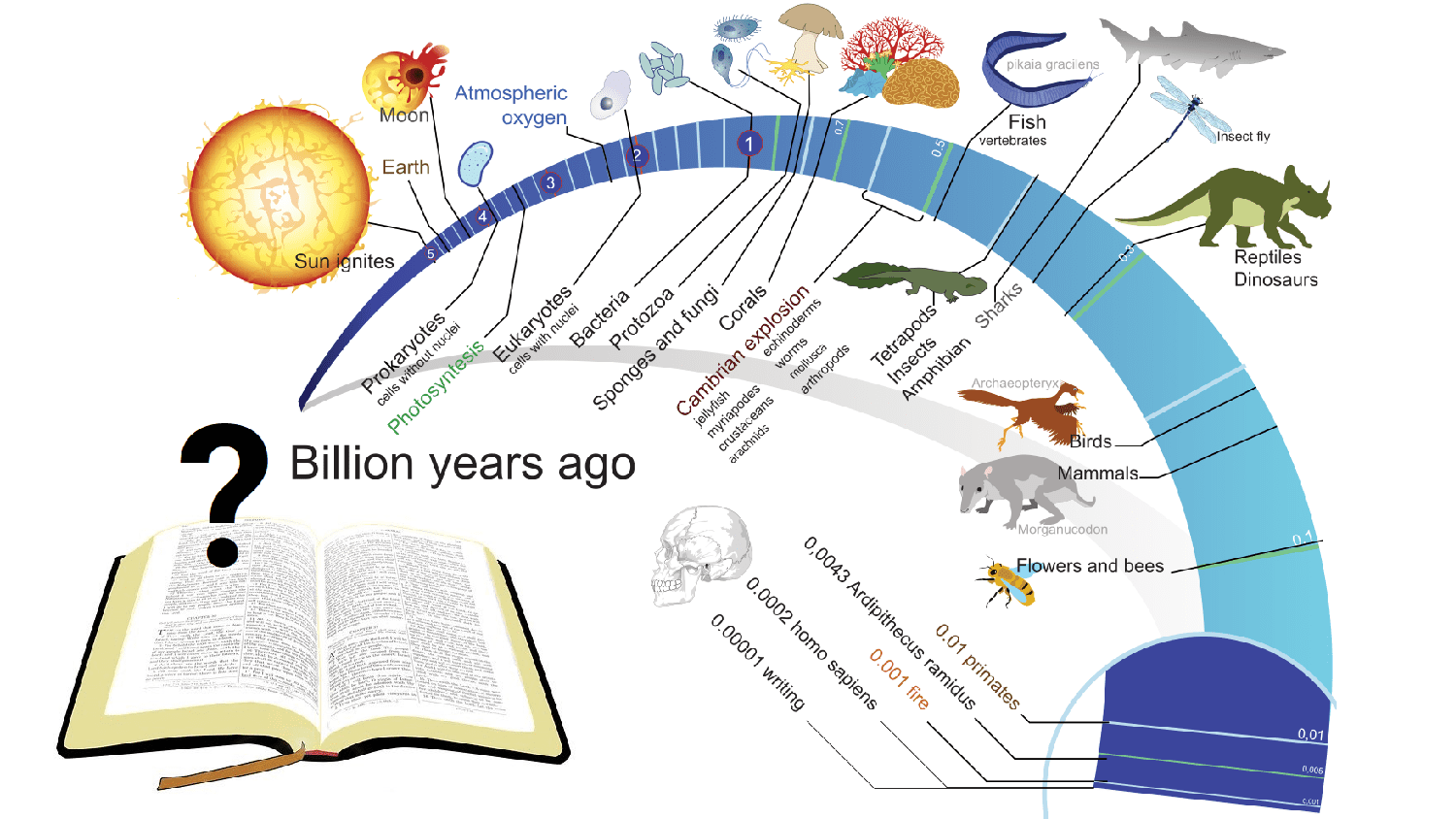[Originally published as Give me a break – Ken Ham’s hyperevolution]
Give me a break.
In the past couple months, I’ve heard on more than one occasion the insinuation from evolutionists that somehow creationists are really evolutionists, so the creation/evolution debate has radically changed. Why? Because Ken Ham now endorses “hyper evolution” in the Ark Encounter, and that’s new! Creationists have given up on creationism and now just accept an absurd form of evolution. WOW! “He’s more of an evolutionist than I am!”
Give me a break.
I hope I can maintain a charitable attitude here, but this emerging attitude is so ludicrous I’m going to have a really hard time doing that.
First of all, this isn’t Ken Ham’s original idea, any more than it’s my original idea. I’ve complained about this before, but the true history of creationist thought is not really catching on. There just seems to be a gut-level appeal to saying that Ken Ham is more evolutionist than the evolutionists!
Except that this is a ludicrous example of false equivalency.
Why? Let’s think through the ways the word evolution can be used.
- Evolution can refer to true microevolutionary fluctuations within a population, such as the changes in beak shape observed by Peter and Rosemary Grant in the Galapagos.
- Evolution can refer to the emergence of new species or the idea that very similar species are related to a common ancestor. This can be illustrated by the putative relationships of the species of Galapagos mockingbirds, which are all very similar to one another yet still placed in different species. The reason we find them together in Galapagos is because there was once only one Galapagos mockingbird species that spread through the different islands.
- Evolution can refer in a more general sense to the development of life on this planet as purportedly depicted in the fossil record.
- Evolution can refer to a very specific claim that all life on this planet is related to a common ancestral population, i.e. universal common ancestry.
- Evolution can refer to particular examples of evolution, like horse evolution, whale evolution, the transition from dinosaurs to birds, or the transition of ape-like animals to human beings.
There’s an attitude today that these different senses of evolution all follow logically and inevitably from the first sense. In other words, if you accept microevolutionary fluctuations, then you must, as a rational being, accept everything else. It’s just a row of dominoes.
But this is clearly incorrect.
Frankly, it can’t be more obviously wrong. Fluctuations within a population, even when they clearly demonstrate natural selection, cannot alone explain to us the origin of species. There must be other evidence added to the mix, the sort of evidence marshaled to support evolution sense #2, speciation and species relationships. Only when we see both sorts of evidences (for #1 and #2) would we be justified in thinking that sense #1 has anything to do with sense #2. Likewise, even if speciation were true, that doesn’t necessarily lead us to senses #3–5.
For example, the fossil or genome record could be otherwise, which would then falsify #3 or #4 while leaving #1 and #2 intact. And if the fossil record were otherwise, we wouldn’t even talk about the bird-dino transition or the evolution of hominins. These could be mysterious and unattested.
But, you say, the evidence is not otherwise, and all the evidence supports evolution; therefore the senses of evolution fall together like a row of dominoes. But that’s not true either. It’s at least possible that microevolutionary fluctuations due to natural selection have little to do with the emergence of new species.
Maybe speciation has more to do with particular types of variations that emerge along the lines of Goldschmidt’s macromutation model, and natural selection plays only a trivial role. That’s really one of the main questions in the creation/evolution debate: To what extent does the undeniable evidence of microevolutionary change or the compelling evidence of speciation relate to other sorts of evidence, like the fossil record or comparative genomics?
And there is other evidence, particularly biblical or theological considerations, that we bring to bear on evolution in the sense of #3–5. Issues such as a biblically-derived sense of the antiquity of the earth and the relationship of animal death to creation definitely have relevance to these questions in the creationist mindset.
What Do Creationists Actually Believe?
But despite all that, let’s just look at the reality of what Ken Ham believes about the senses of evolution:
- Evolution as microevolutionary fluctuations in populations. I might be wrong, but I can’t think of any examples from the last twenty years in which he’s rejected this sense of evolution. We could dig up plenty of examples where he objects to calling this evolution or where he goes on to say that this doesn’t support “molecules to man” evolution. But the reality of fluctuating finch beaks doesn’t seem to bother him.
- Evolution as speciation or species relationship. This is a bit murkier. I have always perceived him as being very careful in his language: species come from created kinds. I confess I don’t fully grasp his point here, but I think he means that the created organisms were a different sort of category than modern species. Species don’t just change into other species.
Whatever he means, he’s always insistent that these “changes” only take place within the confines of those original created kinds. There is no change from one kind to another. - Evolution as a gradual development of life on this planet. Obviously, he rejects this. Life was created suddenly. It did not gradually develop.
- Evolution as universal common ancestry. Again, he totally rejects this claim.
- Evolution as specific instances. It sort of depends on the example, but mostly these are rejected. Dino to bird, land animal to whale, ape to human are all rejected.
So for these five senses of evolution, Ken Ham is sort of OK with #1 as long as you don’t call it evolution, unclear on sense #2, and rejects #3–5. So “Ken Ham’s Hyperevolution” is nothing shocking at all and really isn’t newsworthy. Except for that one little bit: he doesn’t like calling it “evolution.”
Just like Ken Ham, I am quite resistant to calling changes within created kinds “evolution” for the simple reason that the popular imagination identifies evolution with sense #3: the gradual development of life on this planet.
As a scientist and scholar, I can understand using “evolution” to describe senses #1–2, but as an educator, I understand that doing so leads to confusion. I want to make sure that I’m fully understood by my audience, and I need to find a way to communicate that to the audience. I do not advocate universal common ancestry or interpreting the fossil record as a gradual development of living things, and that’s a critical distinction.
Now you might say, hey, speciation is evolution; you know it, and you’re just dishonest because you won’t admit it. And I think that’s totally wrong.
What I advocate differs in important ways from the senses of evolution, and hence I think it’s worthy of either a new name or at least not confusing people with the same name.
- I do not accept universal common ancestry.
- I do not believe the fossil record preserves a record of the gradual development of life on this planet.
- I do not accept the dino-bird or ape-human transitions.
- I do not believe that recognizing speciation or microevolution necessarily requires me to accept these other senses of evolution.
- On top of all this, add the stipulation that the earth is only thousands of years old, and I really stand out quite starkly from anything sensibly called “evolution.”
Therefore I think it’s not only valid but imperative that we distinguish my position from “evolution” because they’re not remotely the same.
To me, then, if anyone is being disingenuous, it’s those who want to call Ken Ham an evolutionist when it’s so obviously false. If we care about honesty and fair treatment of people (loving your neighbor and loving your enemy), we should be very interested in speaking carefully and truthfully about that person. Ken Ham is not a hyperevolutionist.
Neither am I. We are creationists.







